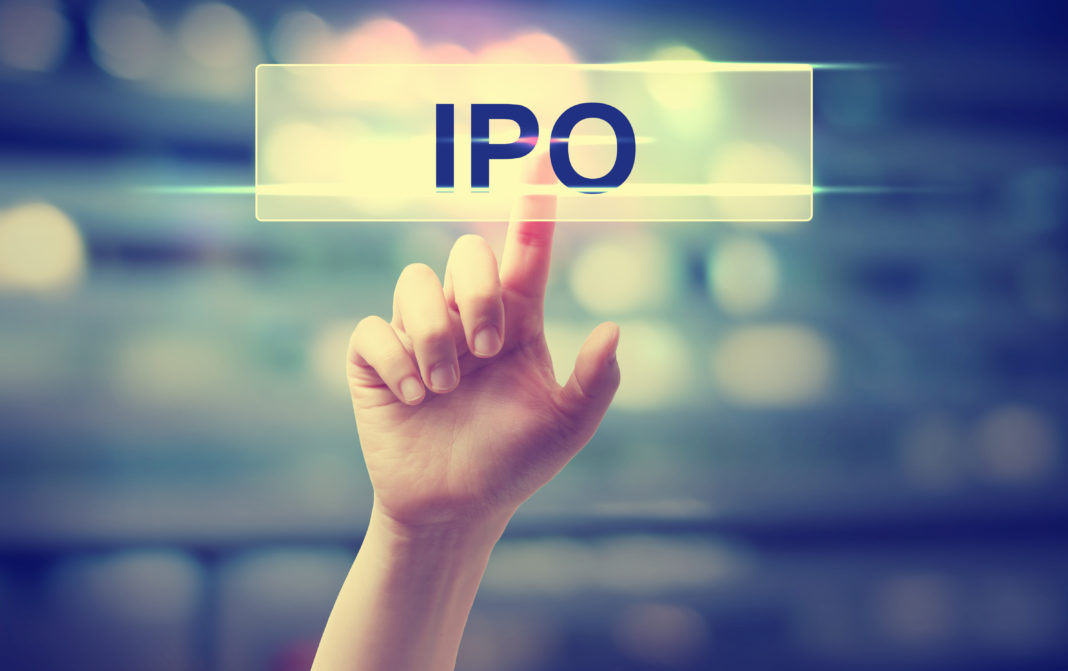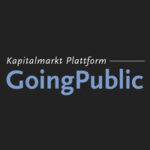Bildnachweis: Tierney – stock.adobe.com.
About 20 years ago, Germany was a leader in biotechnology. Gradually, the center of this industry has shifted more and more to the USA. The reasons for this development are manifold. For one thing, biotechnological research has often been met with mistrust in both society and in politics. On the other hand, data play a major role in this type of research. While the use of data has been increasingly restricted, especially in Germany, it has been recognised in the USA that data is the most important raw material of the new century. That is why the large data-based platforms such as Facebook or Amazon did not originate in Germany or Europe, but in the USA – and with Alibaba, for example, most recently also in China, where the use of data is even more freely possible. By Klaus Rainer Kirchhoff
The Nasdaq saw 60 IPOs of life science companies in 2019
In this market environment, it has become increasingly difficult for young biotech companies to secure funding for their research in Europe, while in the USA, venture companies have made bold and daring investments of large sums of money into this field. As a result, the IPOs of biotech companies have increasingly shifted to the Nasdaq. The Danish company Genmab, whose IPO I was able to accompany to the Neuer Markt segment of the Frankfurt Stock Exchange in 2000 and which was delisted from Frankfurt in 2002, is now valued at more than EUR 14 billion on Nasdaq after a successful IPO. This development would probably not have been possible without the funds from the IPO at the time (around EUR 200 million). Today, the company generates sales of around EUR 720 million and enjoys a profit of EUR 290 million.
After the collapse of the technology stock markets, the German stock market, with its thoroughness (and the overall German tendency to throw out the baby with the bathwater), made the mistake of shutting down the Neuer Markt, which was designed to finance new, research-intensive emerging technology companies. The Nasdaq, on the other hand, which experienced a crash very similar to that of the Neuer Markt at the time, was able to recover and reposition itself. This is why it is now the most successful technology exchange, while Deutsche Börse could not recapture the level of success previously obtained in the positioning of a segment as was the case with the Neuer Markt. If the regulations had been changed back then with the experience of the crash of the Neuer Markt, the latter would probably be an important technology exchange today.
While there was no IPO of a life science company on Deutsche Börse in 2019, Euronext recorded five IPOs, whereas the Nasdaq saw 60 IPOs of life science companies during this period. If we look at the performance of these companies since the IPO, we get a very differentiated picture. On average, life science IPOs on Euronext lost around 23%. The largest company in this segment is Uniphar PLC with a market capitalisation of EUR 380 million.
Biotech and biomedical companies, though overshadowed by so-called unicorns such as Uber Technologies Inc. with its USD 8.1 billion IPO in May, account for 60 of the 185 listings on US exchanges this year. In 2019, twelve Nasdaq life science IPOs had an issue volume of more than USD 200 million, the biggest of which being Avantor Inc. with USD 2.9 billion. Their performance was much more encouraging with an average value of 62.6%. For all 60 life science IPOs, the performance was 48.9%.
So, on to Nasdaq?
One highly-respected German biotech company did have a Nasdaq IPO in 2019. BioNTech managed to raise USD 150 million, or 10 million ADSs at a price per ADS (corresponding to the share) of USD 15. Considering that the company had a target issue volume of USD 250 million, i.e. 13.5 million ADS in a price range of USD 18 to USD 20, the IPO on the Nasdaq was at least mixed success. It is pleasing to see that the price of the ADS has performed very well since then (+122.9%). It should be noted that BioNTech will probably be fully financed for three to four years with the proceeds from the IPO. Normally, biotech companies are only fully financed for two to three years, younger and smaller companies for even shorter periods. Smaller companies at an earlier stage will find it very difficult to have a successful IPO on the Nasdaq in this environment. Not to mention the high listing and follow-up costs as well as the considerable legal risks that board members in the USA are exposed to.
A number of companies in the life science industry are now back on the IPO watch list (https:/goingpublic.de/goingpublic-watchlist). Some companies are already on the market with their plans, with Deutsche Börse being the targeted marketplace for these companies. Last autumn, DiaMonTech AG had planned their IPO in Frankfurt. DiaMonTech AG is a medical technology company that specialises in the development, design, and sale of products for medical diagnostics. The patented photothermal detection technology based on infrared lasers enables the precise measurement of relevant blood parameters. The first application is a non-invasive blood glucose measurement, which enables an accurate and fast non-invasive blood glucose measurement without the patient experiencing any pain.
When I first met with the founder of the company, he was thinking more about a financing round and not about an IPO. But then, it was decided to prepare the company for an IPO and then approach banks as well as investors with a convincing equity story to see if an IPO was possible at this early stage. After all, time is money for a technology such as that implemented by the company in the prototype and whose effectiveness has been confirmed in clinical tests. The one who goes to market first with a reliable non-invasive solution has the „golden ticket“ (according to a potential investor), and the proceeds from an IPO can be used to bring the product to market quite quickly. Since the feedback of the investors visited in London and Frankfurt was very positive, the company decided to go public.
Up to time in which this decision was made, the costs were very limited (mainly costs for the IPO consultant). As the partners brought on board (bank, lawyers, auditors) were also very price-conscious when they entered the deal, the risk in the event of failure was also manageable. In autumn, at the time of the IPO, most IPOs worldwide were cancelled. DiaMonTech also had to postpone their IPO, although many investors were looking for an ambitious valuation. As the company was able to successfully conclude another financing round parallel to the IPO process, it is sufficiently financed to continue to pursue its strategy and to catch up on the IPO later. The example of DiaMonTech shows that a successful IPO does not necessarily depend on the stock exchange, but above all on professional preparation.
| Exchange | Life Science IPOs 2019 | Total issue volume | Average return |
| Deutsche Börse | 0 | USD 0 | 0% |
| Euronext | 5 | USD 0.2 bn | -22.6% |
| Nasdaq | 60 | USD 13ƒ.7 bn | +48.9% |
Sources: deutsche-boerse-cash-market.com, euronext.com, biopharmcatalyst.com, own calculations; average return is calculated as mean performance of share prices since IPO, based on the issue price.
For a biotech company, it is absolutely necessary for the equity story to meet certain requirements. For example, a clinical phase is a must, although some companies still in the preclinical phase did manage to have a successful IPO. In addition, the liquidity of the shares is a major prerequisite for success. Investors must see the opportunity to sell the shares later. Finally, the most important prerequisite for a successful IPO is management, and by this I mean the respective CEOs and CFOs.
Concerning the market place, the costs of an IPO and the follow-up obligations associated with a stock exchange listing, I would honestly advise smaller companies against getting involved in an adventure on the US market. It is more a question of professional preparation and the selection of advisors and partners, especially the bank, than the marketplace you choose. European banks also have access to investors in the USA, not only US banks.
ABOUT THE AUTHOR
Klaus R. Kirchhoff is one of the leading and most experienced consultants in the capital market with 72 IPOs and 400 IR mandates over the last 20 years. He is the founder and CEO of Kirchhoff Consult AG.
Autor/Autorin
Die Redaktion der Kapitalmarkt Plattform GoingPublic (Magazin, www.goingpublic.de, LinkedIn Kanal, Events) widmet sich seit Dezember 1997 den aktuellen Trends rund um die Finanzierung über die Börse. Ob Börsengang (GoingPublic) oder die vielfältigen Herausforderungen für börsennotierte Unternehmen (Being Public), präsentiert sich GoingPublic cross-medial als Kapitalmarktplattform für Emittenten und Investment Professionals.



